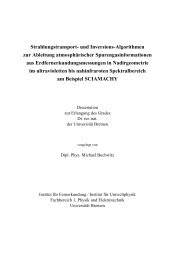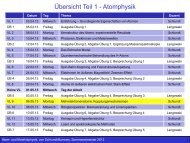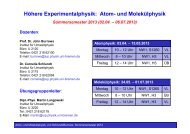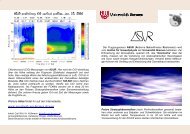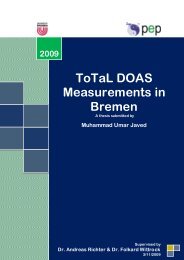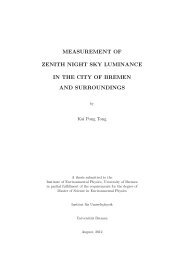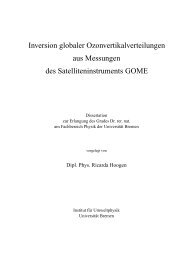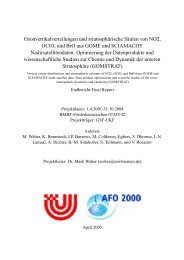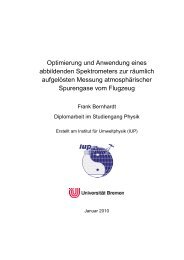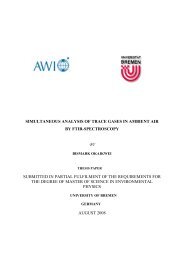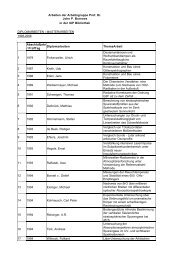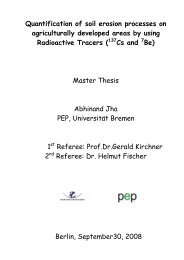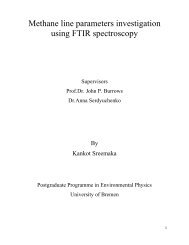True Coincidence Summing Correction in Gamma Spectroscopy
True Coincidence Summing Correction in Gamma Spectroscopy
True Coincidence Summing Correction in Gamma Spectroscopy
You also want an ePaper? Increase the reach of your titles
YUMPU automatically turns print PDFs into web optimized ePapers that Google loves.
some sources with short half-lives which would not be appropriate for rout<strong>in</strong>e<br />
calibration. Nevertheless, with an appropriate selection of nuclides it is possible to<br />
create a valid close geometry efficiency calibration. The TCS-free s<strong>in</strong>gle gamma-ray<br />
efficiency curve will still be irrelevant to the estimation of the nuclides with complex<br />
decay cheme. It needs to be corrected for the summ<strong>in</strong>g <strong>in</strong> the sample measurements<br />
In practice spectrum analysis is constra<strong>in</strong>ed by the type of the software used. So<br />
it is pert<strong>in</strong>ent to consider how the spectrum analysis program would treat calibration<br />
data such as that <strong>in</strong> Figure-2.2. Most likely it will construct a 'best' but completely<br />
<strong>in</strong>valid fit, perhaps as <strong>in</strong> Figure-2.8. It is clear that all the po<strong>in</strong>ts are likely to<br />
be lower than they should be and that the true calibration curve should lie above<br />
them all.<br />
For comparative analysis, standardized sources are required. The spectrum<br />
analysis program calculates results by reference to a calibration curve so, a set of<br />
correction factors for each gamma-ray needed to be measured which can be<br />
applied to the output from the program. Tak<strong>in</strong>g as an example the data <strong>in</strong> Figure-<br />
2.8, the procedure would be;<br />
• Construct an efficiency calibration<br />
• Measure calibrated sources of each the nuclides to be determ<strong>in</strong>ed,<br />
prepared <strong>in</strong> the standard geometry and of the same density as the samples<br />
to be measured.<br />
• Use the computer program to calculate the activity of these sources<br />
based upon the estimated calibration. The ratio between measured and<br />
actual activities is the correction factor to be applied to the sample<br />
measurements.<br />
A fundamental problem arises when standardized reference sources are not available<br />
for a particular nuclide; <strong>in</strong> this case it would be necessary to perform<br />
measurements at a large source-to-detector distance us<strong>in</strong>g an appropriate TCSfree<br />
calibration curve and compare these with the close geometry measurements.<br />
27



